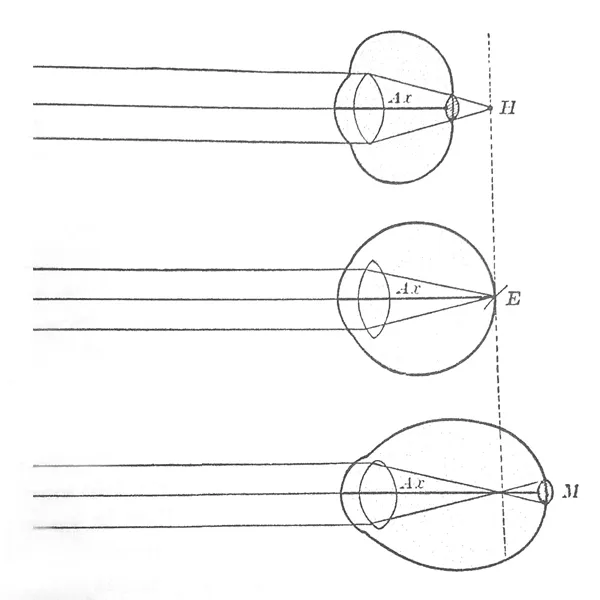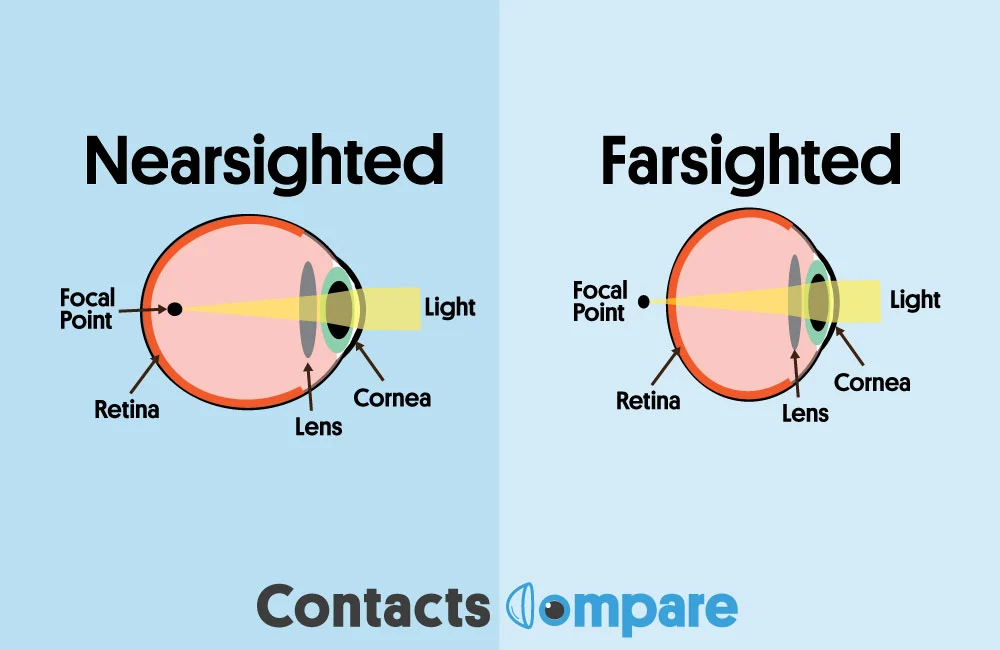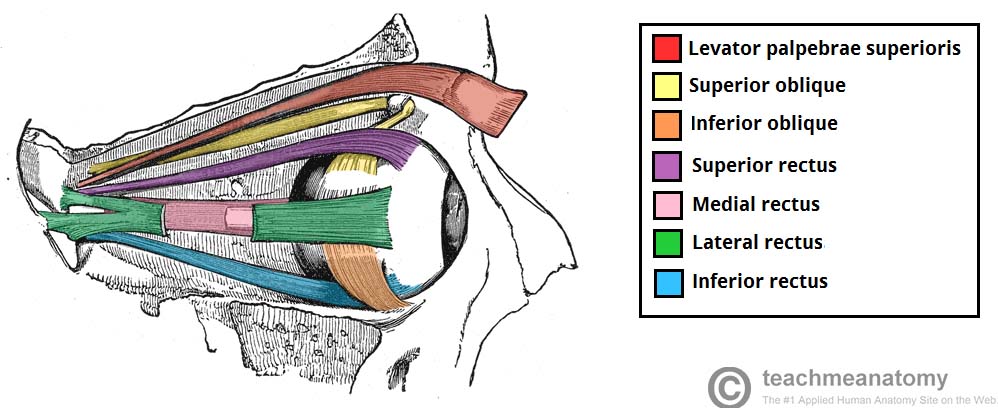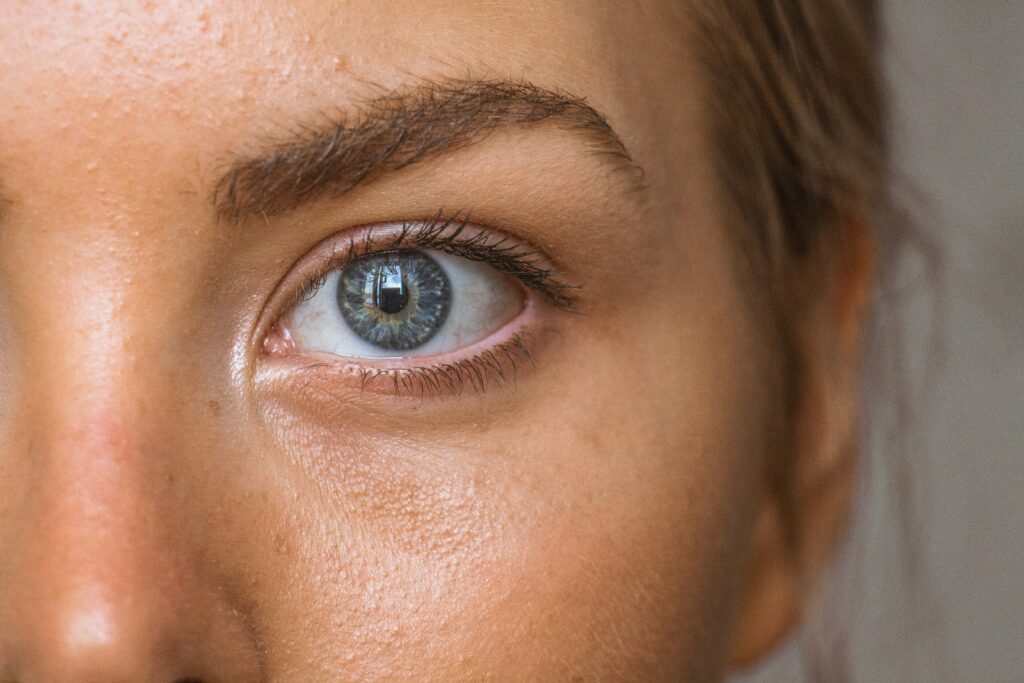If straining can make your vision worse, you’d think un-straining could make it better…
And you’d be right.
Vision is a big topic, but I’ll be posting more in the near future. Dr. William H. Bates, a New York City Ophthalmologist, made incredible breakthroughs in vision issues and successfully reversed nearsightedness, farsightedness, astigmatism, and other refractive issues without glasses or surgery in his patients.
What may surprise you is that this all happened over 100 years ago.
How is this possible? Well you’ve probably seen a diagram like this before. A side view of the eyeball. The middle one has normal vision. The light focuses correctly on the retina.

The top one is a far-sighted eye and the bottom is near-sighted. Although these are quite exaggerated.
Here’s another exaggerated illustration for reference:

So you might think, why not change the shape of the eye so light focuses correctly? Is the eyeball shape fixed and unchangeable?
And it turns out it’s not. Did you know we have all these muscles around our eyes?

And these muscles can pull our eyeballs into different shapes. Especially if we are straining.
So before you start trying to do eye muscle exercises or “strengthen” the muscles, don’t. These all work properly and automatically when we get them to relax. So we don’t need to work out the eye muscles, we need to do the opposite and get them to relax. The starting point is realizing that if our eyes aren’t seeing clearly, we have locked in the strain and don’t even realize it. When you learn to let go of the strain mentally, you’ll see clearly and you can see it for yourself.
More to come soon. But if you can’t wait, look for a natural vision improvement coach like Gloria Ginn or Nathan Oxenfeld. You can read about the techniques, but it’s well worth having an expert watching how you’re doing them and giving you tweaks proactively in real-time so you don’t lock in bad habits.

